The Mars Science Laboratory
Interview with
Chris - In November 2011, one of NASA's most ambitious missions yet, mounted to explore Mars, blasted off destined for the red planet carrying a mini cooper-sized science mobile laboratory called Curiosity. But how do you land something the size and weight of a car on a planet millions of miles away? When Curiosity launched, I spoke with NASA's Mission Chief Scientist, John Grotzinger to find out.
John G. - To begin with, we launched and then on the cruise from Earth to Mars, there's a solar array which keeps the rover charged. It will take us about 8 months and then we begin to feel the pull of the gravitational field and we enter the planet's atmosphere and begin to descend. But this time, in contrast to previous Mars landed missions, the aero shell which is the bit that you see in these videos that's sort of screaming along with flames shooting out beneath it, it's actually able to fly a bit like an aeroplane wing, and then there are thrusters that are activated to allow it to correct the trajectory. And so, instead of plunging vertically through the atmosphere, it's actually coming down at quite a low angle. And then, when it decelerates to about mach 2, it deploys the parachute and that slows it down even further. And then when we get down to maybe a kilometre above the surface, the heat shield falls away and from that now, everything gets very different from previous missions. We now have a fourth spacecraft called the powered descent vehicle, and the powered descent vehicle has 8 rocket thrusters and beneath it is attached the rover, pretty much ready to go, with the wheels hanging down. The descent stage then will drop down. The thrusters will push against the gravitational pull of Mars until it hovers 20 meters or so above the surface. Then it reels the rover out on a set of cables down to the surface of the planet, and then the cables are cut, and the descent stage goes off, crash lands. And the rover, pretty much it lands ready to go as a result of that process.
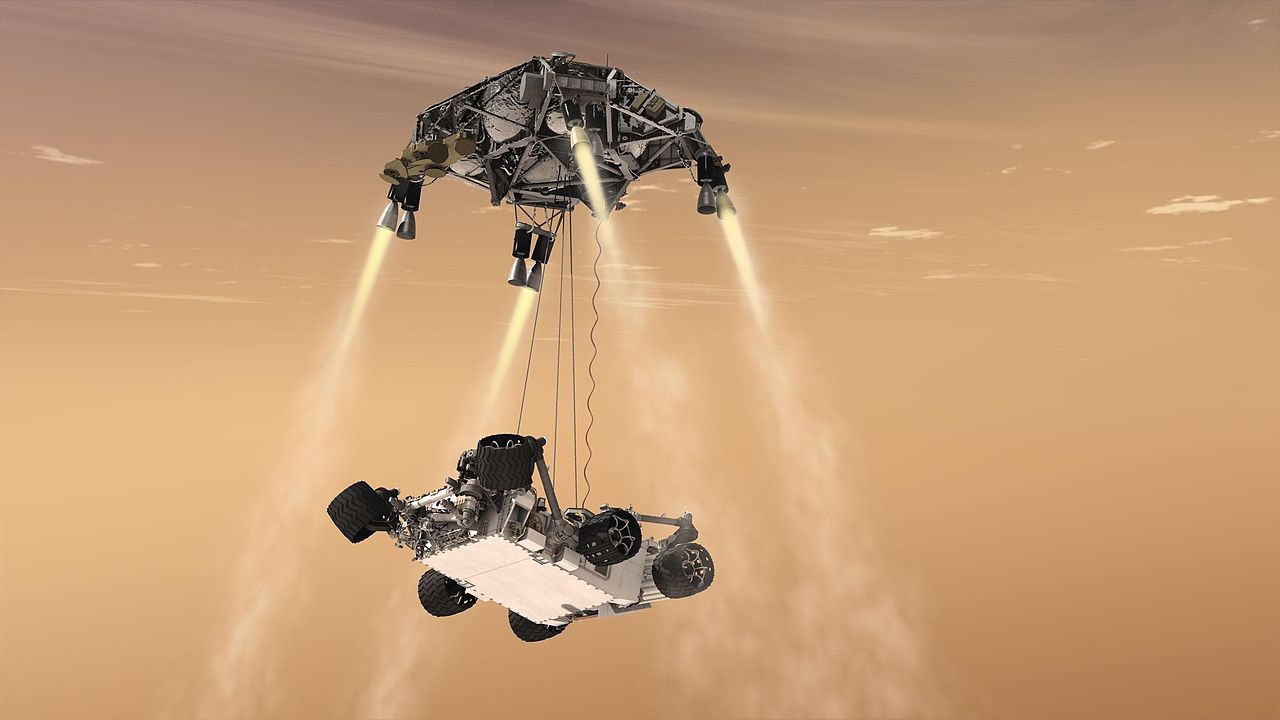 Chris - Not surprisingly, NASA's scientists are dubbing the landing process "7 minutes of terror." But what will Curiosity be looking for and how? With us now is NASA's Dr. David Blake who is also working on the mission. Hello, David.
Chris - Not surprisingly, NASA's scientists are dubbing the landing process "7 minutes of terror." But what will Curiosity be looking for and how? With us now is NASA's Dr. David Blake who is also working on the mission. Hello, David.
David - Good morning.
Chris - You're in mission control of course in California.
David - Yes.
Chris - Now, where is Curiosity's landing site?
David - We're going to land at a place called 'Gale Crater', one of the oldest, biggest, and deepest craters in the surface of Mars. So simply put it's a place where a lot of sediment and water could've accumulated very early in Mars history.
Chris - When you land there, what will you actually do? Is it just one giant crater or is there any specific set of structures that you'll be trying to examine?
David - There's just a whole bunch of stuff to look at. The central mound of Gale which is 5,000 metres tall is basically made up of sediments that were deposited under the influence of water, either lakes or streams, or something like that maybe as early as 4 billion years ago. So we're going to be going up through that sediment a layer at a time, just like reading a book and determining the early environments that happened on the Mars surface, maybe 4.5 or rather 4 to 3.5 billion years ago.
Chris - So, it's the way of retracing Mars' history without actually having to go too far. So, is there effectively a mountain in the middle of the crater? How did you get this strange structure?
David - So, Gale Crater - first, there's a big impact base and it's very deep. It's 4 km below the present average surface of Mars and effectively, this crater was in-filled with sediment to the point where the entire crater was inundated and filled above the brim and then later on over the next billion or 2 billion years by erosion, a lot of that material was eroded away. So we're left with this remnant, this erosional remnant mountain of the original in-fill of the Gale Crater.
Chris - Was that water then that was moving things around to fill in and then re-erode the crater?
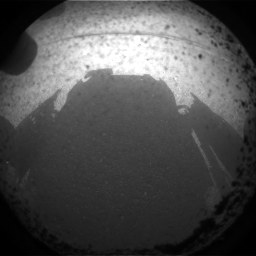 David - Not so much the erosional part, but certainly the in-filling part. We have definite evidence of hydrated minerals and things that look like where liquid flowed. So, we're pretty much sure that water was associated with the deposition of the sediments, but I think maybe the erosion was created more by wind over billions of years.
David - Not so much the erosional part, but certainly the in-filling part. We have definite evidence of hydrated minerals and things that look like where liquid flowed. So, we're pretty much sure that water was associated with the deposition of the sediments, but I think maybe the erosion was created more by wind over billions of years.
Chris - And Curiosity would drive towards this, I suppose timeline of sediment, and start sampling each in turn?
David - Yeah. The landing ellipse, the centre of it is going to be within 6 km of the beginning of the Gale mount, Mount Sharp. And we know from orbiting data, from orbital images, that there's very finely divided sediment that contains clays, and hydrated sulphates, and things like that embedded and this is exactly the place that we want to go.
Chris - So talk us through how Curiosity actually works because it's a huge rover. What's going on inside it? What's it going to do with the sediments that it picks up?
David - Well, it is big. I've stood beside it and it towers over me. Now, the MER rovers which one is still operating on Mars, were kind of like field geologists and they would go out and sample a rock, look at a rock, do something with the arm instruments, but it really didn't have a laboratory to do anything other than that. So, Mars Science Laboratory has not only a field geologist's tools, but also, there's a whole full up laboratory inside the rover to do laboratory quality analysis. So, once we look out and see a sample, there's just a wide variety of instruments. The mast has telephoto cameras in colour. It has something called 'camcam' which is kind of like a Star Wars type of a deal. It fires off a pencil thin laser beam which makes a plasma of rock as much as 7 metres away and then it images that little plasma plume in the infrared and it tells you what elements are present there. So, we can kind of zap rocks as we go along and say, "Hey, let's go over there. That's look like an interesting rock or outcrop." And then once we get there, we've got something like a little geologist's hand lens to put down there that gets very high resolution colour images. We have something that was also on the MER rovers, an APXS which tells us the elements that are present in the rock, and then we have a drill which unlike the MER rovers, we can actually drill down about 5 cm into a rock and take that powder or take a scoop of powder from the ground and deliver that to our two laboratory instruments. And the two laboratory instruments - one's called 'CheMin' for chemistry and minerality - that's my instrument and it will tell you the minerality of whatever is given to it. And the other is called SAM, and SAM is really 3 instruments. It's a mass spectrometer, a gas chromatograph, and a laser spectrometer, and that's going to tell us the nature of any organic compounds that are present in the soil.
Chris - So, you will spot interesting things across this timeline, you can work out roughly when in Mars's history each of the samples you're processing has come from, and you can then probe it for what chemicals are there. This means you can then do interesting geology to work out what Mars's history was when it was wet, when it was dry, maybe some clues about the magnetic field for example. But NASA have denied that this is a life-finding mission. Why have NASA gone down that path?
David - Well, that's kind of a perilous position to take because life, people kind of think of, well, we either found it or we didn't find it. And we are looking for habitable environments, that is environments that would be clement for life to have formed or persist, and that means as far as we know, we're kind of myopic because we only know of one type of life, and that's Earth life. We want a place where water is present. We want a place where energy could've been where rocks are being dissolved and re-precipitated and producing a bit of energy, and we want a place where organic materials could persist. So we want all of those things together and a temperature that's kind of a clement environment for life. So that's kind of what we're looking for.
Chris - But at the same time, we know what the signatures that go with Earth-type life are. If you spotted those sorts of signatures, would you be able to say, well, that looks like life. Similarly, if you were to land Curiosity in the middle of the desert on Earth, would it conclude that Earth is a place where life exists on the basis of the measurements that we're taking?
David - Well, that's a good question. On Earth, life has just captured every part of the planet so, if we go to the most desolate parts of the planet and if we took these instruments and took a sample and analyse it, we would find life. I don't care where you go - the Atacama desert, Antarctica - it would be difficult to sample a place where you couldn't find some evidence of organic compounds that would indicate life. Now Mars isn't quite so replete that we know of with life. We don't see anything like that, so we're really looking for chemical signatures for organic molecules that might suggest that either life or the precursors of life would've been there.
Chris - We got to start somewhere, haven't we? David, thank you very much. That's David Blake. He is one of NASA's scientist working on the Mars Science Laboratory mission.
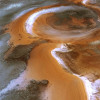

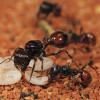
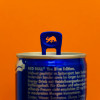






Comments
Add a comment